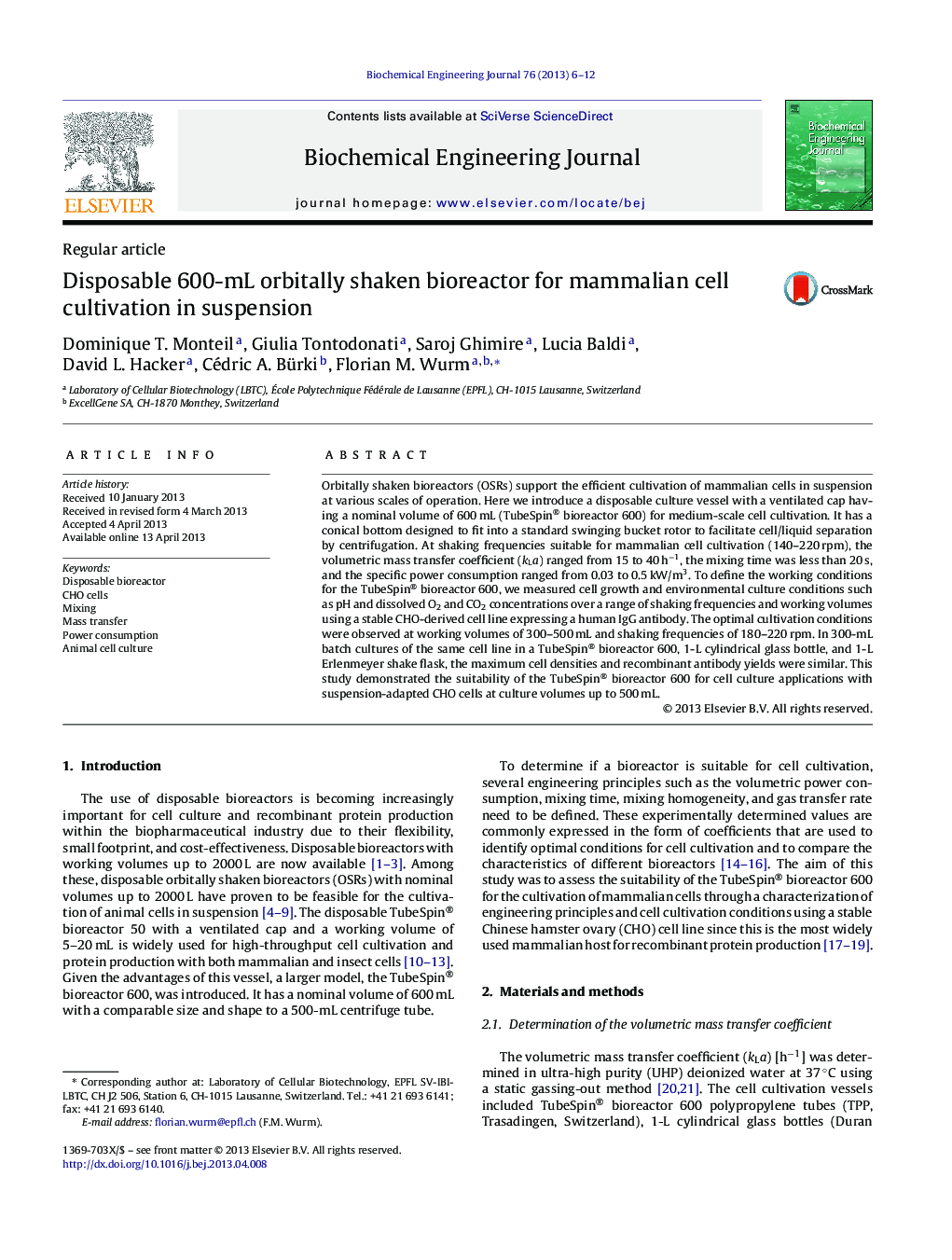| Article ID | Journal | Published Year | Pages | File Type |
|---|---|---|---|---|
| 3378 | Biochemical Engineering Journal | 2013 | 7 Pages |
•Through engineering principles, the TubeSpin® bioreactor 600 was characterized.•High gas transfer, rapid mixing, and low specific power consumption were observed.•Routine animal cell cultivation, medium scale 100–500 mL was demonstrated.•High cell densities were achieved with all orbitally shaken bioreactors tested.
Orbitally shaken bioreactors (OSRs) support the efficient cultivation of mammalian cells in suspension at various scales of operation. Here we introduce a disposable culture vessel with a ventilated cap having a nominal volume of 600 mL (TubeSpin® bioreactor 600) for medium-scale cell cultivation. It has a conical bottom designed to fit into a standard swinging bucket rotor to facilitate cell/liquid separation by centrifugation. At shaking frequencies suitable for mammalian cell cultivation (140–220 rpm), the volumetric mass transfer coefficient (kLa) ranged from 15 to 40 h−1, the mixing time was less than 20 s, and the specific power consumption ranged from 0.03 to 0.5 kW/m3. To define the working conditions for the TubeSpin® bioreactor 600, we measured cell growth and environmental culture conditions such as pH and dissolved O2 and CO2 concentrations over a range of shaking frequencies and working volumes using a stable CHO-derived cell line expressing a human IgG antibody. The optimal cultivation conditions were observed at working volumes of 300–500 mL and shaking frequencies of 180–220 rpm. In 300-mL batch cultures of the same cell line in a TubeSpin® bioreactor 600, 1-L cylindrical glass bottle, and 1-L Erlenmeyer shake flask, the maximum cell densities and recombinant antibody yields were similar. This study demonstrated the suitability of the TubeSpin® bioreactor 600 for cell culture applications with suspension-adapted CHO cells at culture volumes up to 500 mL.
